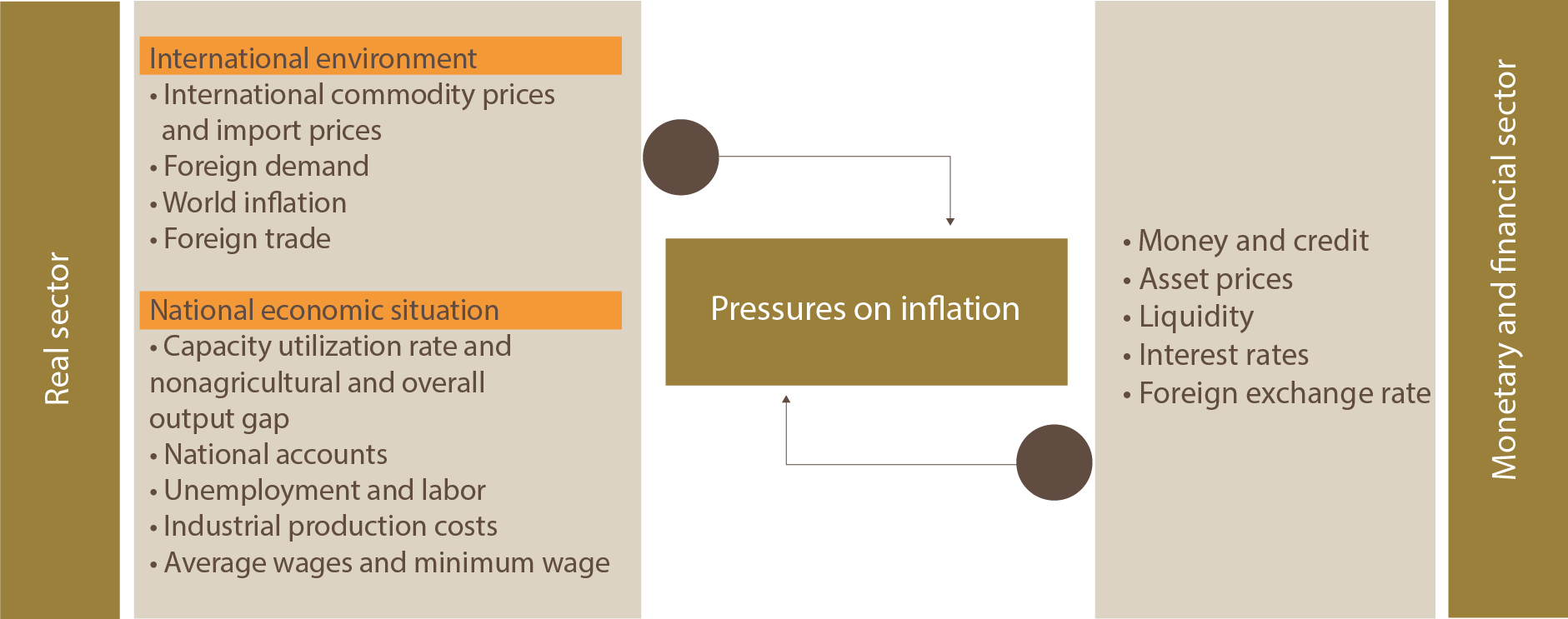Analytical Framework
The analytical framework of monetary policy is designed to assess the risks weighing on price stability. It is structured around two pillars: the real pillar and the monetary pillar.
| ANALYTICAL FRAMEWORK OF BANK AL-MAGHRIB’S MONETARY POLIC |
|---|
 |
The analysis of the real pillar is based on a thorough review of recent economic developments both internationally and nationally.
The analysis of the real pillar is initiated by indicators of the international situation (growth, unemployment, inflation, etc.) and price developments in commodity markets, notably oil, phosphates and wheat, which impact the current account and foreign exchange reserves on the one hand and inflation on the other. These analyzes allow the projection of external accounts and NIRs, which are of crucial importance for monetary policy decisions in Morocco, given the nature of its exchange rate regime and the fact that they represent the main factor affecting Bank liquidity.
Still at the level of the real pillar, on the domestic front, the analyses concern national accounts aggregates, wages, unemployment, capacity utilization rate, changes in fiscal policy, etc. These analyses, in prospective terms, enable to estimate the output gap and the capacity utilization rate, which represent the main indicators of inflationary pressures originating from the real sector.
Concerning the "monetary and financial" pillar, the analysis covers bank liquidity, interest rates, monetary aggregates, bank credit, etc. These developments allow measuring the monetary gap which is the main indicator of inflationary pressures emanating from the monetary sector. These analyses are complemented by a review of the main developments in the assets market, with a focus on developments in the real estate market, the stock market and the debt market, thus capturing the wealth effects of economic units and their impact on inflation.





























